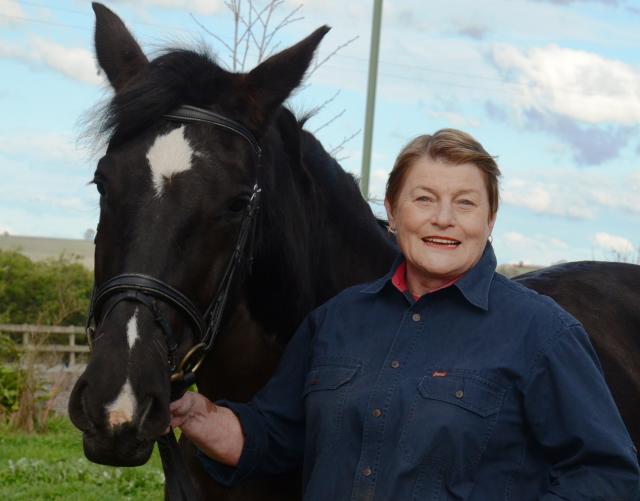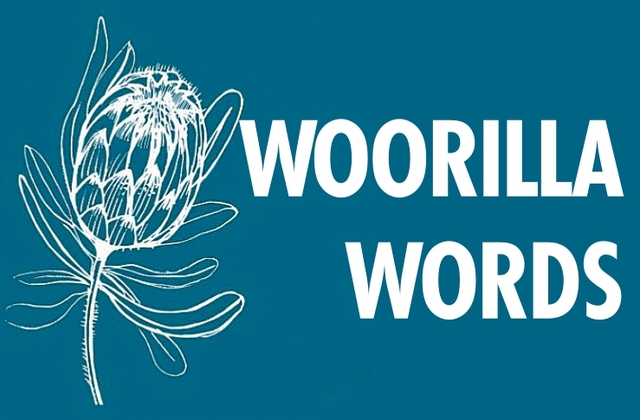Those living in the Dandenong Ranges may have known the late Doctor Patricia Ellis AM for her role in shaping the nation’s animal health direction and management of disease responses.
Her devotion to science, dedication to research and diagnosis capabilities paved the way for progression in racing and thoroughbred industries.
Star Mail sat down with Trish’s husband Gary Smith to take a look back at her outstanding list of achievements after she passed 7 May.
Much of Patricia Ellis’ life has been dedicated to animals, and horses in particular were a passion of hers.
From joining pony club at a young age, to becoming a person industries and government bodies across the world could rely on.
Trish graduated from the University of Melbourne with a Bachelor of Veterinary Science with 1st Class honours and later a Master of Veterinary Science, and her career took her across the world working in private practices in Australia, Uniting Kingdom, Asia and the Middle East.
Trish specialised in the international movement of horses allowing animals to be sent across the world, which was a great triumph for racing industries.
The back bone of this was being part of creating quarantine designs, biosecurity protocols and AUSVETPLANS for industry to follow, with epidemiology and control of equine diseases within her expertise.
Trish’s latest roles were as an Animal Health Consultant to Asian Racing federation, Principal Veterinary Officer for the Victorian Department of Natural Resources and Environment and the Director of Veterinary Department in the United Arab Emirates Equestrian and Racing Association.
She was also on the board of Victria Harness Racing, Head of Department of Horse studies at Box Hill College and the first female president of the Equine Veterinarians Australia.
Trish’s husband Gary Smith met her in 1978 and he said she always had so much drive and determination.
“She never stopped,” Gary said.
This was something that even carried through while Trish was sick with lung cancer before her passing in May this year.
The week that Japanese Encephalitis, which affects horses, pigs and people, broke out earlier this year was also when Trish was diagnosed with the disease.
Trish was the horse industry representative on the Consultative Committee on Exotic Animal Disease and all through her own personal cancer treatment she was still driven to assist.
“How she was able to do that and doing chemo and radio therapy every day, doing zoom meetings, doing teleconferences – just extraordinary, I have no idea where she got the drive from,” Gary said.
Being part of the Technical Committee during the Equine Influenza outbreak in 2007 was another major disease mitigation Trish played a vital role in.
Trish’s wealth of knowledge and expertise extended across the globe, which all helped to build her network that was often the source of supporting the Australian industry through murky waters.
“All of those professional relationships developed into a lot of personal ones…so many things that would be shortcut – go straight to the source,” Gary said.
“She just developed that network, which is really quite extraordinary and that was one of her absolute strengths.”
Trish’s great mind was also admirable during investigations of diagnosis.
Gary said Trish was able to collect useful information and distill it down to an answer or a conclusion.
“It’s a bit like a jigsaw and Rubik’s Cube is complete and she’s got the answer and she was just extraordinary at it,” he said.
Her wealth of knowledge has been gathered from time working overseas and one of the first opportunities was at the Equine Research Station in Newmarket Suffolk, UK.
Time in Ireland at an equine practice was another adventure filled with many memories and milestones.
Trish’s presence, straight talking wit and expertise lead her to gain respect from many during a time when there was very few female vets.
Gary said her passion and energy for it was built into her, with a work ethic like you wouldn’t believe.
“She was just good at it, just plain good at it – and became highly respected because of her ability to deal with whatever was going on with an animal.”
Trish was a trusted companion to the industry, no matter what country it was.
In 1978 when Gary and Trish met in Bahrain, she was working for the King of Bahrain as the equine Practice and Stud Manager.
A year into the role, Trish met Queen Elizabeth II when she touched down for a race meet, which Trish only had just a week to arrange when the visit was announced.
“Not just get the horses ready, but they had to fix the track, they had to get silks, they had to practice – it was just absolutely extraordinary.”
Within Trish’s career, she worked in the Middle East twice – going over again in 1983 when she worked in Abu Dhabi prior to the start of international racing in the Arab Emirates.
During this time the movement of horses for race meets was prominent in Trish’s life, as she developed protocols and plans to make this happen.
“She had to convince the Europeans and Americans that their horses were free of disease by survey and science and collecting information.”
Trish was instrumental in working with governments to see the importing of horses, even into Australia.
She was behind the success of Irish international Vintage Crop winning the Melbourne Cup in 1993, the first northern hemisphere-trained horse to win the race that stops the nation.
Gary said it was a very special moment when VRC boss Andrew Ramsden said in his speech after the win that this wouldn’t have happened without Doctor Patricia Ellis.
Being one of the behind the scenes principle people that made it happen, Trish was part of the design of the Sandown Quarantine Station in 1993 and in turn the internationalisation of the Melbourne Cup.
“Everybody was happy and comfortable that we weren’t going to bring in a disease that we didn’t want and of course it never happened until equine flu broke out in New South Wales in 2007.”
The management of Equine Influenza was another success from Trish’s history, as she was a principal author in establishing the AUSVETPLAN Disease Strategy Manual.
This helped to get around some of the unforeseen difficulties because they had enough background through the manual.
Gary was there for many phone meetings when Trish was working closely with industry and governments on the outbreak.
“She would just not put up with people who either hadn’t read their brief or tried to big note themselves by saying things and doing things that they really had no idea about,” he said.
“She was always very understated from the point of view of go back to the science, go back to the facts, go back to the pathway that you’ve worked out.”
Trish was always at the end of the phone with industry personnel from across the world.
In the last 10 years, Trish did a lot of pro bono work for Asian, South Africa and India racing industries and she was on the International Movement of Horses Committee.
“She did it because she loved it… She was one of the people on the end of the phone, if you wanted to get the right advice or you needed to follow something through or find the right person to talk to, then she was the go to person in so many situations,” Gary said.
“Just head down, bum up and got on with it.. Didn’t go looking for the accolades, but they kept on coming.”
After Trish’s passing, Gary recently travelled to accept Trish becoming a Fellow of the Australian Veterinary Association.
Garry said he was grateful she knew of the acknowledgment.
“That one and the AM I think were the ones that really hit the spot,” he said.
In 2013, Trish became a member of the Order of Australia for her for significant service to veterinary science.
Trish’s past awards include the Jo Miller Award for her outstanding contribution to the equine industry and the Industry Contribution Award from the Thoroughbred Breeders Victoria.
She was also the recipient of the Belle Bruce Reid Medal for Outstanding Women Veterinary Science Graduates and the AVA Meritorious Service Award, The AEVA Award for Veterinary Excellence.
And the receiving and giving surely went both ways as Trish always made time to be a mentor for the next generation of leaders.
Gary said she really enjoyed mentoring and gave back to education by teaching University and TAFE students and industry mentorships.
She was good at finding the next bright spark and devoted time to mentor them through to success.
“She would go to whatever lengths she felt she could to mentor someone to get them to a stage where they could be a recognised expert in a particular area, so that when she’s not around and when others are not around, that there’s people ready to take over,”
“If there was someone there that she reckons she could help then just bend over backwards to do it and really enjoyed doing it.
Back at home with Gary, they’ve lived in Dixon’s Creek for many years.
Garry said Trish had quite the green thumb and enjoyed developing their lowline stud, and molly their dog was also one of her treasured companions.
“It was a labour of love developing this place and breeding our cows, and Tricia rode up until about four or five years ago, actively going to competitions and enjoying this beautiful lifestyle – doesn’t get better than this.”
Since the memorial held at the Yarra Valley Race Course, Gary has spent time organising and categorising thousands of pieces of paper filled with research and data on various diseases, concerns, protocols, processes plus much more, with Trish’s legacy to live on through the donating of her life’s work.
Anyone wanting to commemorate Trish by watching the memorial can do so via https://www.vividstream.net/patricia-ellis








